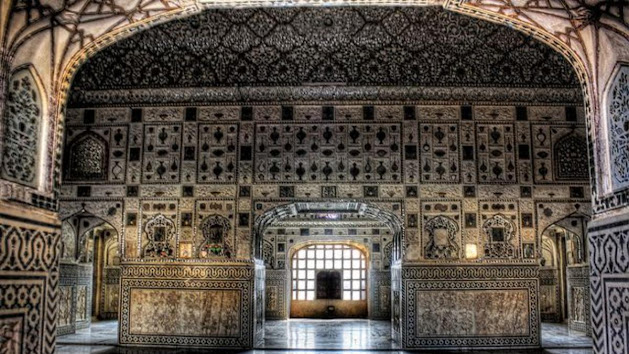Agra Fort: A Stalwart Sentinel of Mughal Grandeur
Introduction:
Nestled on the banks of the Yamuna River in the heart of Agra, India, the Agra Fort stands as an awe-inspiring testament to the grandeur of the Mughal Empire. This colossal fortress, often overshadowed by its more famous neighbor, the Taj Mahal, holds a rich tapestry of history, culture, and architectural brilliance. In this blog, we will embark on a journey through time to explore the magnificence of Agra Fort and unravel the stories etched into its walls.
Historical Background:
Commissioned by the third
Mughal Emperor, Akbar the Great, in 1565, Agra Fort served as the primary
residence of the emperors of the Mughal Dynasty until 1638. Over the centuries,
subsequent rulers, including Akbar's grandson Shah Jahan, left their indelible
marks on the fort, transforming it into a formidable stronghold and a symbol of
imperial power.
Architectural Marvels:
As we step through the
imposing gates of Agra Fort, we are greeted by a synthesis of Persian, Turkish,
and Indian architectural styles. The fort's red sandstone walls, reaching a
height of 70 feet, encircle an expansive complex that spans over 90 acres. The
intricate carvings, delicate marble inlays, and lattice work within the fort
are a testament to the unparalleled craftsmanship of the Mughal artisans.
Key Structures:
Diwan-i-Aam (Hall of Public Audience): This majestic hall, adorned with a throne platform for the emperor, served as a venue for public hearings. The colonnaded structure showcases the emperor's accessibility and commitment to justice.
Diwan-i-Khas (Hall of
Private Audience): Reserved for more intimate gatherings, this opulent hall boasts a stunning
central pillar where the famous Peacock Throne once stood. The hall is
embellished with intricate pietra dura work and geometric patterns.
Sheesh Mahal (Mirror Palace): A shimmering jewel within the fort, the Sheesh Mahal is renowned for its intricate mirror work, reflecting candlelight to create a magical ambiance. This exquisite chamber was often used for private audiences and celebrations.
Jahangiri Mahal: Built by Akbar for his son
Jahangir, this palace is a blend of Persian and Indian architectural styles.
Its elegant façade and landscaped gardens provide a glimpse into the luxurious
lifestyle of the Mughal royalty.
Historical Anecdotes:
As we wander through the
labyrinthine corridors of Agra Fort, we encounter tales of triumphs and
tragedies. The fort witnessed the house arrest of Shah Jahan by his own son
Aurangzeb, who seized the throne. It is said that Shah Jahan, gazing from the
fort's walls, spent his final years in melancholy, yearning for a view of the
Taj Mahal, the monument he built in memory of his beloved wife Mumtaz Mahal.
Conclusion:
Agra Fort, a UNESCO World
Heritage Site, stands not only as a physical testament to Mughal architectural
prowess but also as a repository of stories that echo through the ages. As we
bid farewell to this monumental edifice, we carry with us the echoes of
emperors and the whispers of a bygone era, immortalized in the red sandstone
walls and marble palaces of Agra Fort.

.jpg)
.jpg)





Comments
Post a Comment